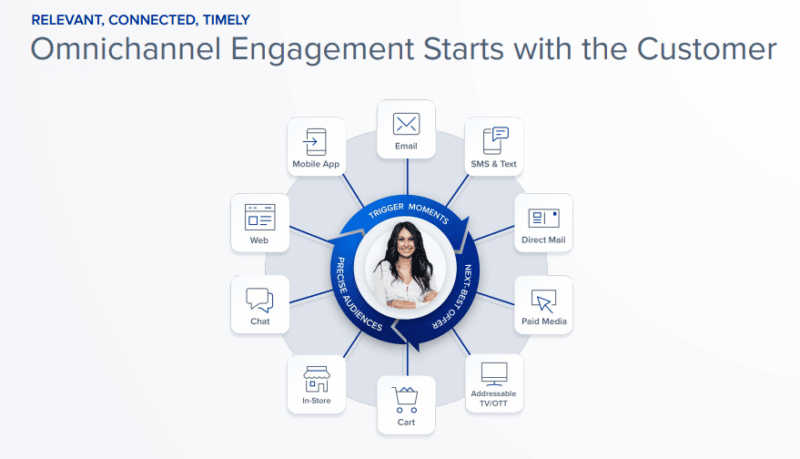Brands know customers interact with them across multiple touchpoints, yet many fail to provide cohesive experiences. It’s not enough for marketers to engage with them in each channel — every interaction needs to be connected.
“Connecting all of your channels — delivering an omnichannel, consistent experience — is very important because we are talking about a 30% higher lifetime value among omnichannel shoppers,” said Vijay Chittoor, co-founder and CEO of CDP company Blueshift, in his recent MarTech presentation. “We are talking with the brands who do it right, getting 89% retention compared to other companies only retaining 33% of their customers.”
He added, “Well-intentioned brands end up delivering poor experiences to customers by not connecting all of their omnichannel touchpoints.”
Multichannel vs. ominchannel engagement
Is your engagement marketing multichannel or omnichannel focused? Though they may sound similar, a multichannel approach actually puts brands at a much higher risk of losing consumers due to poor experiences.
“The mindset for multichannel is very similar to the mindset for single-channel customer engagement,” said Chittoor, “which is all about focusing on the channel of marketing but less on the consumer.”
Marketers should invert the multichannel model and begin thinking of customer engagement as an extension of customer experience. Placing the customer at the center of these efforts is the goal.

Enact centralized experience orchestration
Ideal customer journeys occur seamlessly across many touchpoints. But these only happen when consumer experiences are effectively orchestrated. It’s marketers’ responsibility to meet their needs in each interaction, using the most applicable content and methods.
There are many useful tools out there to assist marketing teams in collecting and organizing experience data, such as CDPs and customer journey analytics software. These platforms help unify customer data from multiple points of contact.

Align processes and teams
“I think the best brands are doing it right when instead of thinking about people and organizations in silos, they are able to connect them,” said Chittoor.
He added, “But more importantly, I think that the brands who are doing it really well are connecting marketing with customers.”
Siloing your marketing efforts can be devasting to customer experiences. Your paid media, email marketing, and other teams should be on the same page so customers aren’t confused as they journey across touchpoints.
Craft a unified customer experience strategy
“When you have aligned people and processes, you have to layer in a unified CX strategy where all of this is seen as extending the customers experience and it goes much more beyond marketing,”
He added, “Brands everywhere are realizing that marketing and customer experience have to be integrated in order to truly deliver omnichannel customer experience to the customer.”
Customer experience is the most important metric in an effective omnichannel strategy. It’s not about how many channels you optimize for — it’s about how well you’ve engaged with the customer.
Watch the full presentation from our MarTech conference here (free registration required).
The post How brands can create omnichannel customer experiences appeared first on MarTech.

0 Comments